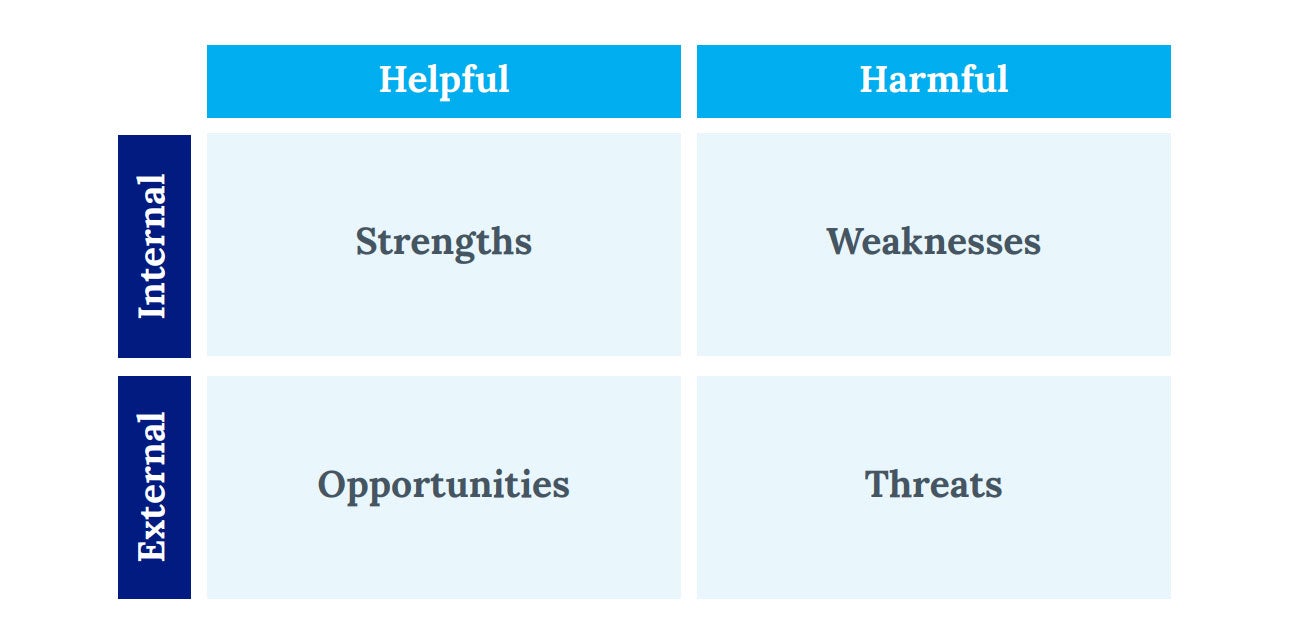Competitive research doesn’t have to involve hiring professionals to track and assess your competitors, like straight out of a spy movie — there’s plenty of data on the internet to collect. By investing even a small amount of time, businesses can gather intelligence on business rivals, identify opportunities and threats in the marketplace, and refine their messaging.
To build an effective framework for competitive analysis, we’ve included a basic step-by-step process to follow as well as a SWOT analysis chart to kickstart your process.
Why Competitor Research Is Crucial for Marketing
Analyzing your competitors’ strengths and weaknesses can help strengthen your marketing strategies. Seeing what’s out there allows you to address your shortcomings.
For instance, sustainable sunglass company Sunski learned that a competitor was successfully advertising on social media. To counter, Sunski used segmentation (which involves dividing audiences into different groups based on demographics, buying habits, or other parameters) to help personalize ads that were more relevant to each of their audiences. By better matching content to specific target audiences, they created better engagement and achieved a 2.4x return on investment.
And you shouldn't just keep an eye on your direct competitors — often, you'll have indirect competitors who offer similar services and products to you, but are serving a different need or purpose or targeting a different audience.
For example, if you’re a business offering accommodation like Student.com, the target audience would probably consist of college and graduate students. There could be intersecting marketing tactics from related competitors such as short-term rental brokers and apartment hunting websites.
How to Approach Basic Competitive Research
A step-by-step approach makes it easier to navigate the choppy waters of competitive research. You don’t need anything fancy to start – a simple spreadsheet for tracking your findings and your web browser are enough. Consider also setting up a spreadsheet that’ll be used as an index and data resource rather than something you check and update regularly.
- Observe the basic messaging on your competitors’ websites. How do they structure their information? Explain their products and services? If it’s not clear what they do, their audience is likely in the dark, too.
- Check past website messaging. How has your competition’s message changed over time? This can tell you what customers are interested in. Hint: Head to archive.org to get you started.
- Slip into your web browser’s Incognito or Private mode. This allows you to search anonymously minus your past cookies and location data. In other words, you’ll put yourself in your customer’s shoes and see what they see when searching for companies like yours – without tailored search results from past Google sessions. A clean slate gives you a clear view of your competitor’s content.
- Use keywords related to your company and your competitors. Discover where your competitors appear in search results and what keywords they’re using to get there. You can also see how they’re describing themselves in their meta description (the paragraph that’s below the title of their site in results).
- Create a not-so-secret dossier on your competitors. Include information like how long they’ve been in business, their location, how many offices they have, the number of employees, and funding. It’s important to keep up-to-date with news coverage involving your competitors to analyze for any threats.
- Poke around on social media. Posts on their social media pages provide a gold mine of information. You can find out common complaints or issues their customers have through social reviews and publicly posted customer comments they’re trying to bury, like products that break after one use.
- Sign up for your competition’s newsletter. Use a free email account and check out their content. This helps you track what your competitors are doing and how good they are at following up. It may also inspire your newsletters.
- Keep tracking your competition over time. You don’t have to update your research every week, but try to go back every month or quarter. See how competitors are changing up their messaging, the images they use, and how they differentiate themselves. You can even look for clues that they’re trying out new messaging, or pricing structures. If you have the budget, enlisting the help of a PR firm can also go a long way.
SWOT Analysis
Once you’ve done your competitive research, take the information you’ve learned and use it to create a SWOT analysis. A SWOT (Strengths, Weaknesses, Opportunities, and Threats) analysis can serve as your strategic road map. While you’re using this table, keep both your ideal audience and your competitors in mind. You may find a lot of opportunities and threats.
![]()
For these purposes, you can simplify by focusing on the ones you can change with marketing. For example, a competitor’s weakness could be customer service that doesn’t respond quickly. While you can’t impact delivery with marketing, you can set better expectations.
For the full A to Z on how to identify, grow, and maintain your audience through content and marketing strategies, check out AdRoll’s Ultimate Guide to Growth.
Last updated on April 23rd, 2025.

